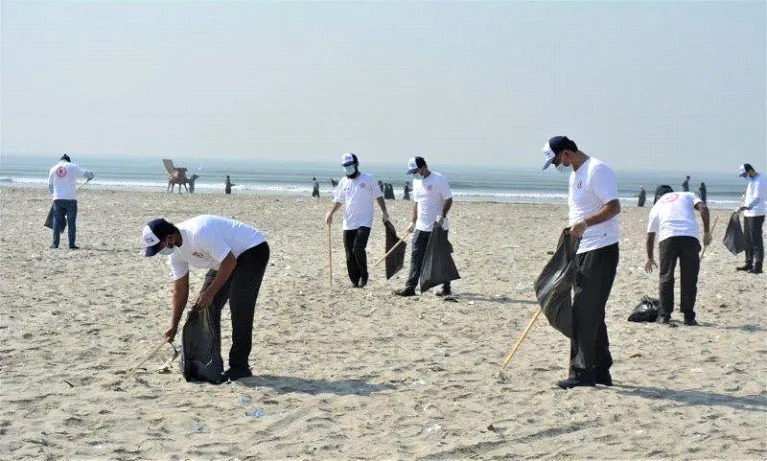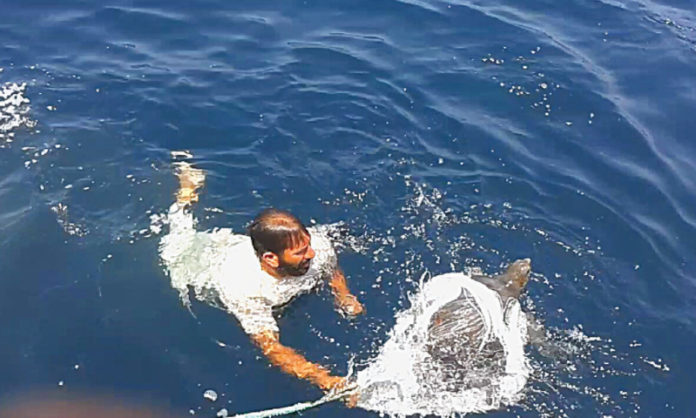In the early 1960s, visitors waiting for a boat at Keamari basin would toss a coin into the clear sea and young boys from nearby localities would dive and recover it from the bottom in no time. It was both fun and a small source of earning for the lads in less inflationary times. Those pristine environments have long been devastated as the amount of unmanaged plastic waste into the sea, commonly known as plastic waste leakage, has reached crisis proportion and already caused significant economic and environmental damage.
Normally, environmental degradation is a trade-off with growth and prosperity, but in our case much degradation has taken place without corresponding benefits in terms of economic prosperity. We have faced a situation where for years consumer demand for disposable plastic products has been growing far more rapidly than corresponding enactment of waste management infrastructure. The sluggish growth of this infrastructure has spawned two problems – scale of waste collection which has not shown an upward trend and disposal of collected waste within the system.
The oceans cover three fourth of the planet Earth which means that for every living person on land, there is approximately five hectares of ocean. This ratio leads mankind to a flawed assumption that oceans offer unlimited capacity for waste dumping. In the past, damage to economy and environments was caused from such sources as storm water, inadequate waste management systems of processing chemicals in industrial zones and nutrient run-off from agriculture, but now-a-days, plastic pollution is emerging as a serious threat due to sheer volume, ubiquity and extra-ordinarily long life of plastic products. While plastic products themselves have short useful lives, the longevity of plastic molecule enables it to travel across territorial waters and exclusive economic zones.
Researchers are of the view that some plastic products retain their original recognizable form even after 400 years from the time it was dumped into the sea. Last year, ‘Science’ – a highly respected peer-reviewed journal, warned that unless steps are taken soon to deal with this threat, oceans would contain one ton of plastic for every three tons of fish by 2025. Over 80% of land based discarded and not well managed plastic ends up in sea while 20% of leakage originates from ocean based mercantile marine sources.
This is a dreadful scenario in view of increasing evidence that micro plastics can affect the physiology of a host of organism and potentially compromise their health. Studies have established a linkage between plastic waste in oceans with liver cancer, and endocrine dysfunction in fish. Plastic ingestion can also affect fertility in female and reproductive tissues in male fish. Other reports suggest that plastic even affects lugworms, amphipods and other organisms at the very bottom of ocean food chain. The complex toxicology of plastic substances is a problem not only for marine life but also for global fish industry which provides nearly 15% of world’s dietary protein, employs 55 million people and is valued at approximately USD 220 billion.
The more developed western economies have developed waste management systems commensurate with their growth patterns and controlled the movement of plastic from land to oceans. Such measures and strategies, however, are non-existent or are in rudimentary form in less developed countries like Pakistan. Our problem is compounded further by lack of public awareness and relegated priorities of health issues in the public sector. There is a dire need to push up collection of discarded plastics to higher levels and improve post-collection treatment and stoppage of leakage into the ocean.
There are many areas in which public interest can be generated to stop plastic and other waster from entering the oceans. These include mass media programs in electronic and print media to highlight negative impact of waste dumping on economy, health, dilution of aesthetic and environmental value of coastal areas and harms to overall productivity of ocean. Taken singly and in isolation, these reasons might not provide sufficient impetus for concerted action but since sea is inherently connected and integrated, a collective perspective can serve as a strong catalyst for collaborative approach.

Interestingly, perfect plastic material has not been produced so far though the scientist community is aware that any solutions today must be path-dependent for the future. Large-scale use of waste-to-energy technologies like gasification, pyrolysis (thermo chemical decomposition of organic material at high temperatures in the absence of oxygen) and incineration (with energy recovery) might solve existing pollution problems to an extent but it could decelerate long term prospects of development of plastics which offers higher-residual-values at the end of their life cycles.
The threat from plastic pollution cannot be wished away since it is extensively used in modern economies and moves through supply and demand chains to support global enterprises. The user benefits of plastics are wide-ranging and will continue to drive economic and industrial growth both in developed and emerging economies. Worldwide plastic production is projected to increase from its current quantum of 250 million metric tons to approximately 380 metric tons in the next decade. This increase is due to accumulative effect of population and economic growth, upward resource intensity and unprecedented dominance of plastics as the multi-purpose material for economies across regions. Inevitably, higher production of plastics and its greater use also means more leakage of its waste into the oceans. Its residual life and value depends on how the plastic is used which is one of several criteria in plastic industry. This makes it difficult for any single user in the value chain to determine full-life-cycle benchmarks and subsequent degradation/destruction strategies. Some estimates suggest that by year 2025, double the quantity of plastic will reach the sea than what is being dumped at present. It therefore makes sense to adopt both a local and a regional approach for the effort to be effective and result orientated.
There are two aspects of the problem – one which deals with what is to be done with plastic already dumped into the sea and the other how to stop transportation of plastic waste from land to sea. While Pakistan may not have the capacity to do much about plastic in the oceans, we can certainly focus on land-based solutions to prevent its leakage into the ocean. In our context, stopping plastic products from ending up in the sea would be a better and cost effective solution rather than the expensive option of treating it after it has been dumped into the sea.
An effective strategy should include knowledge about origins of ocean plastic debris and how it reaches into the sea – and any significant difference in pattern our coast along warranting different solutions and approaches. Also under consideration should come various ‘leakage –reduction’ solutions and their cost benefit curves. We need to analyze what can be done to trigger implementation of leakage-reduction measures in the short, medium and long term as well as ponder over cornerstones of concerted regional programs to address the issue.
This effort will obviously require funding which should be possible through typical project-financing mechanisms involving public, private and multinational sectors. In many countries the private sector has played an important role in catalyzing public and private investment by strategically reducing capital costs and investment risks. Such models of cost effective waste management can be examined to see if they are replicable in our context.
Adopting an appropriate financing approach along with the need for political commitment, location specific data and analysis, and civil society pressures like recent ‘light on capital’ individual efforts in Karachi at garbage collection should yield some result underpinned by a strong understanding of possible solutions to handling uncontained waste management near waterfronts and their economics.
Such drives should serve to accelerate existing initiatives, exploring new possibilities and increased private sector commitment on ‘ocean smart’ measures geared totally towards reducing leakage of plastic into the ocean. Viable and immediately implementable solutions should be embraced as soon as possible as evidence of environmental and economic damage is mounting and any further loss of time will only aggravate the situation.




